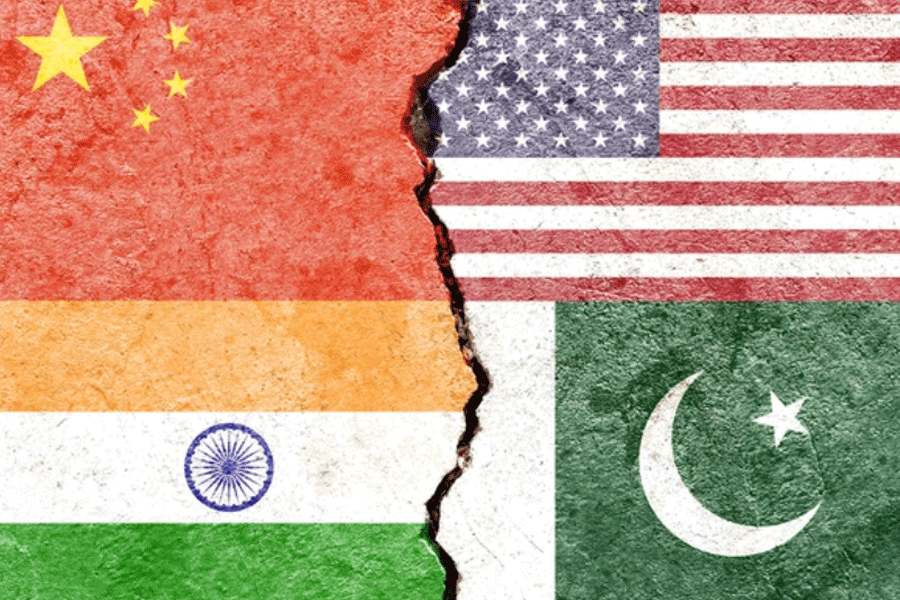China, the largest creditor and debt collector to the world’s poorest countries, has assured Pakistan of the refinancing of a commercial loan worth $3.7 billion. It is denominated in Chinese yuan (RMB) rather than US dollars — signalling Beijing’s broader effort to decouple its economy from the American currency.
But experts believe that Pakistan, which owes $26.6 billion to Beijing, highest among all countries, cannot repay loans with its export of salt and cricket balls. Hence, the loan rollover to Islamabad reaffirms the “iron brother” narrative — a continuation of China’s longstanding strategic hedge against India.
By the end of 2024, Pakistan’s external debt had ballooned to over $ 133 billion — more than a third of its GDP — with interest payments alone consuming 43 per cent of federal revenues.
Developing nations are projected to repay a record $35 billion to China in 2025, of which a staggering $22 billion will come from 75 of the world’s poorest and most vulnerable countries according to a report by the Sydney-based Lowy Institute reported by Reuters.
Kalpit Manikar, fellow for China studies at the Observer Research Foundation, said Beijing’s loan decision is geopolitics to counterbalance India, and the money will go to the Pakistan Army.
"Economically, it doesn’t quite add up. Pakistan’s economy has been on the brink for years. The country has undergone multiple bailouts in the last two years alone, each one based on promises of economic turnaround. But those turnarounds haven’t materialised,” Manikar told The Telegraph Online.
“Given the level of corruption and military dominance in Pakistan, the money is unlikely to fuel economic reform. It is primarily being channelled to the army.”
The Lowy Institute report had noted that in 54 developing countries, debt payments to China will surpass the combined payments owed to the Paris Club of western bilateral lenders.
Riley Duke, author of the Lowy Institute report, had told Reuters that for the next five years, China will be more debt collector than banker to the developing world.
“As Beijing shifts into the role of debt collector, western governments remain internally focused, with aid declining and multilateral support waning,” the report warned, citing risks of development setbacks and broader instability.
But as Manikar noted, the loan by Beijing is not meant for repayment.
“What does Pakistan export? Sports goods, salt, dry fruits — these are low-revenue items,” he explained. “So, how will it repay these loans? Exporting salt and cricket balls?”
Manikar saw Beijing’s loan decision through the prism of the Line of Actual Control (LAC), and what he called China’s failure to alter the status quo between 2020 and 2024 that has pushed it to recalibrate tactics.
“That attempt failed. China had to return to the original patrolling arrangements in October 2024. So now, perhaps, it’s using Pakistan as a pressure point — particularly on issues like Kashmir. Just as the India-China border was moving towards normalisation, we saw developments on our western frontier that prompted Operation Sindoor. China’s backing of Pakistan cannot be separated from these broader strategic dynamics.”
Beijing’s shift away from dollar-denominated loans is part of China’s overarching strategy to reduce its reliance on the US currency and not a Pakistan-specific move, said Shruti Pandalai, fellow at the Institute for Defence Studies and Analyses.
“By lending in RMB rather than the dollars, China is using Pakistan as a testing ground for de-dollarisation and RMB internationalisation,” Pandalai told The Telegraph Online. “Pakistan’s economic fragility becomes a tool for China to extend monetary influence regionally, while weakening US-led financial structures.”
Pandalai agrees that these loans are a longstanding strategic hedge against India.
“The move shows China’s willingness to bail out Pakistan repeatedly, despite non-payment of earlier debts, underscoring the political rationale behind the relationship. China's refinancing helps prevent Pakistan’s financial collapse, ensuring a stable client state on India’s western front. A financially afloat Pakistan sustains bilateral military collaboration, CPEC continuity, and potential proxy leverage against India,” she said.
Pakistan’s central bank reserves stood at $ 11.4 billion following a $1-billion International Monetary Fund (IMF) injection this month. With Chinese refinancing, reserves could touch $12.7 billion before another anticipated decline by mid-June.
As of December 2024, Pakistan’s total foreign commercial loans stood at $6.2 billion, with Chinese commercial loans accounting for $ 5.4 billion, as per an IMF report.












